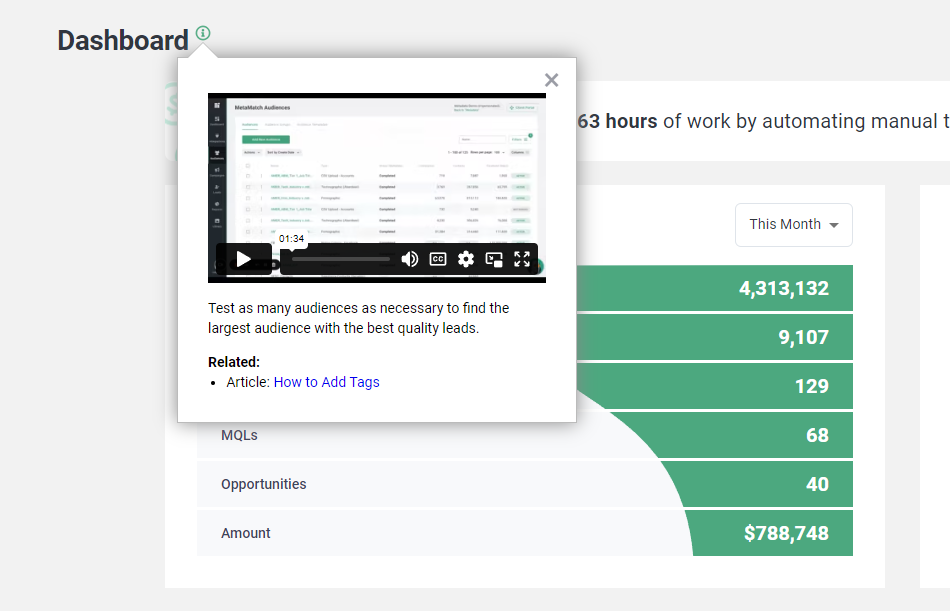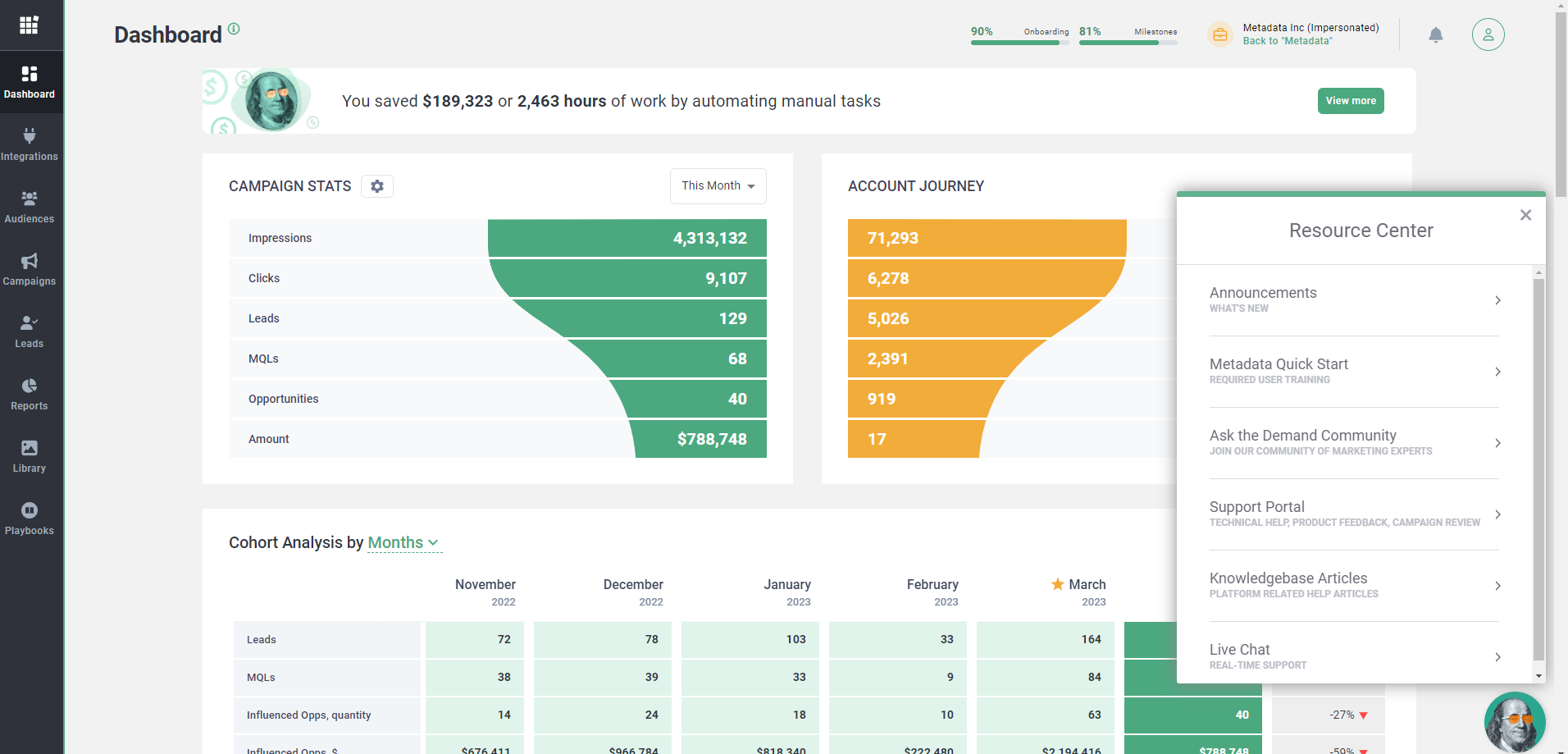How Metadata built self-serve user education into their app with Pendo—for free
Products used
Experience Pendo, personalized to you
Get a demoWhen it comes to running an efficient marketing operation, having to set campaigns up in one tool, manage A/B testing in another, and track and optimize ad spend in yet another is about as inefficient as it gets. Metadata exists to eliminate this inefficiency. Their marketing automation platform removes the need for marketers to manually perform these types of tasks in separate tools, so they can instead focus on building more—and more strategic—campaigns.
But Metadata is a complex platform, and there has historically been a heavy burden on the customer success teams to get new users up and running. Users would submit their campaigns, and the Metadata team set everything up in the product for them—a process that wasn’t efficient, let alone scalable.
Metadata began working to empower customers to do all of these set-up steps themselves using in-app and self-service support strategies. They quickly realized that building out the necessary in-app messages and automated onboarding flows required a large amount of engineering and product resources. As Josh Desmarais, senior production support engineer, put it: “We were doing a lot of hard coding in the platform, and it took a lot of time to implement these messages.”
They needed a better way, and Pendo was their answer.
The power of no-code, in-app education
The Metadata customer success (CS) team needed to be able to design, build, and deploy targeted in-app guidance all on their own. After getting started with a Pendo free account, they were well on their way to making this a reality.
“We wanted to enable people across the company to use Pendo and get the most out of these tools,” Desmarais noted. “We put more of a focus on that, as well as automating what was previously manual and resource-intensive work.”
First, Metadata’s CS team used product analytics to create segments based on their most common user personas. They then mapped out where users in each group commonly dropped out of workflows and identified the high-value features they wanted to encourage users to engage with.
The Metadata team used these insights to build a core curriculum for each segment, and then created in-app guides to deliver the educational content directly inside the product. They also embedded videos in the guides to offer a deeper learning experience. This allowed Metadata’s CS team to teach customers and drive successful behaviors while they’re engaged in the product, without any human intervention.

In addition to this work from the customer success team, other teams across Metadata saw value from no-code guides in Pendo, too. The product team leveraged in-app guides to announce and drive adoption of new features, and analytics to understand if—and how—users were engaging with these new features.
Upgrading to get even more out of Pendo
After seeing this initial success, Metadata decided to expand its Pendo usage and upgrade their free account. Most notably, they wanted to leverage Pendo’s Zendesk integration, which allows them to proactively serve knowledge base articles where their users are—in the product—via Pendo’s Resource Center. This is yet another way the team is able to get ahead of common questions and keep support ticket volumes at a minimum.

“With the Zendesk integration, a user can click [into the Resource Center] and immediately start talking to somebody and get help, which is a huge win for us,” said Desmarais.
Metadata is also utilizing NPS in Pendo, and using product data to build a more targeted approach. Once users get to a certain threshold of engagement, the team delivers in-app NPS surveys to those users specifically, and responses are automatically pushed to Slack so the customer service team can easily see NPS data in real-time.
Finally, Metadata’s customer support team has also leveraged Pendo to uplevel their support strategy. Desmarais explained, “If we have any disruption to the platform, our support team can push out a message in-app to alert customers and let them know we’re working to resolve the issue.” He continued, “We want to make sure that for anything critical, we’re notifying our customers right away and using an in-app message in Pendo to connect with users instantly.”
It’s a win-win: Metadata can reach users quickly, and customers are put at ease knowing the team is aware of—and working to fix—the issue they’re experiencing.


